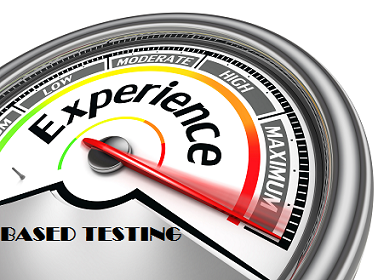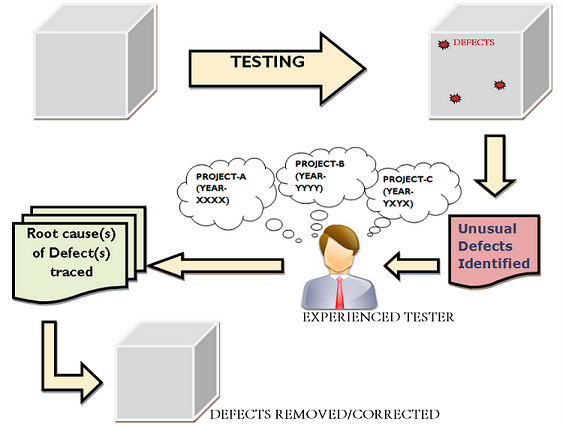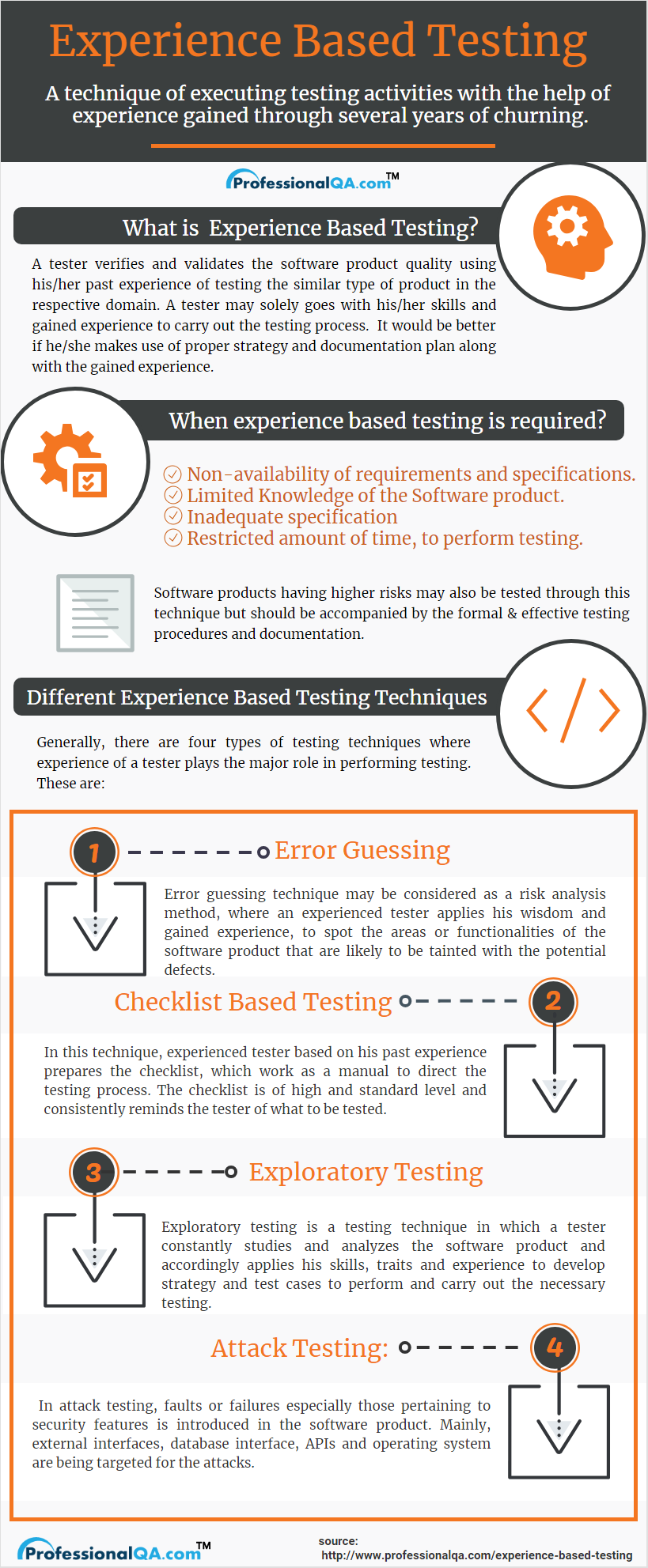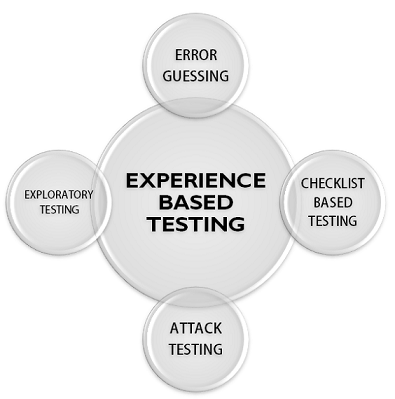

"Knowledge gained through experience is far superior and many times more useful than bookish knowledge" - Mahatma Gandhi
The above stated quote stands very much true in the real world. When everything fails, then the experience of a person helps in achieving the success. Now, coming to the software testing, it is always recommended and preferred to carry out testing with the help of proper & effective documentation work. This effective test strategy is accompanied by the skills and knowledge of the tester to perform testing activity in best possible manner.

Despite, being equipped with all necessary and relevant ingredients, testing team sometime faces unusual and unexpected problems and issues during the course of testing. Even after giving their 100%, they are not able to resolve some of these issues. At that moment of time, experience of the tester or of any other engaged professional plays the role of a saviour to understand and analyze the roots of the defect(s) in order to remove or correct them, successfully.
As of now, you all might have understood the basic meaning of "experience based testing". It is the technique of executing testing activities with the help of experience gained through several years of churning. Basically, a tester verifies and validates the software product quality using his/her past experience of testing the similar type of product in the respective domain.

Although, a tester may solely goes with his/her skills and gained experience to carry out the testing process. However, it would be better if he/she makes use of proper strategy and documentation plan along with the gained experience. This may produce reliable and effective results.
Experience is that precious tool of the tester, which is always required in performing all types of testing. However, there are certain circumstances, when a tester is left out with his/her past experience as the only resource to carry out the testing. Some of the expected situations are as follow:
Apart from the above situations, software product involving fewer risks could also be tested through this testing approach. However, software products having higher risks may also be tested through this technique but should be accompanied by the formal & effective testing procedures and documentation.

Generally, there are four types of testing techniques where experience of a tester plays the major role in performing testing. These are:

It's a simple technique of guessing and detecting the potential defects that may creep into the software product. In this technique, a tester makes use of his skills, acquired knowledge and past experience to identify the vulnerable areas of the software product that are likely to be affected by the bugs.
Error guessing technique may be considered as a risk analysis method, where an experienced tester applies his wisdom and gained experience, to spot the areas or functionalities of the software product that are likely to be tainted with the potential defects. Thereafter, tester assigns each area with low-risk, medium-risk and high-risk defect prone areas, and accordingly prepares the test cases to locate these defects.
What could not be found through formal testing technique may be spotted through error guessing. However, it is preferred that the formal testing technique should be followed by the error guessing technique.
In this technique, experienced tester based on his past experience prepares the checklist, which work as a manual to direct the testing process. The checklist is of high and standard level and consistently reminds the tester of what to be tested. Checklist prepared by a tester is not the static and the final list, i.e. changes may be brought into it in proportion to needs & requirements, occurring during the course of testing.
Further, it is pertinent to mention that the checklist is the only tool to ensure the complete test coverage in this testing. For further reading, you may visit our article checklist based testing.
Exploratory testing is a testing technique and simultaneously, a progressive learning approach to perform maximum testing with the minimal planning. During the course of exploratory testing, a tester constantly studies and analyzes the software product and accordingly applies his skills, traits and experience to develop strategy and test cases to perform and carry out the necessary testing.
Exploratory testing best use may be seen in the event of inadequate specifications & requirement and severely limited time.
Attack testing is a testing technique, close enough to negative testing but not similar to it. In attack testing, faults or failures especially those pertaining to security features is introduced in the software product. Generally, all the features and functionalities along with the interfaces, which are responsible for the interaction with the external interfaces, applications, system or any external elements, are being considered during the attack testing. Mainly, external interfaces, database interface, APIs and operating system are being targeted for the attacks.
Comprehensively, it may be stated that experienced based testing if used wisely may yield large success to the testers in locating more potential bugs in the software product.
Advertisement: